Articulating pictorial space.
I t's ironic that the most freely available examples of the work of cartoonist Jerry Robinson, who has had a long and illustrious career, are the Batman stories he ghosted under Bob Kane's name. He gets a royalty for them, so I guess he doesn't mind talking them up, as he did in the Comics Journal 2005 interview. It's been written about often enough that he became Kane's assistant in '39 when he was 17 and got the chance to draw stories completely solo from '42 on until '46 when he moved elsewhere. He drew around 23 of these solo outings. The earliest are an approximation of the standard Batman style, while the ones at the end suggest an artist who has arrived at an admirable facility and is coasting. Of the bunch in the middle, the plateau, the third volume of Batman Archives (first released in 1994) (reprinting stories from Detective comics monthly) has three. Beyond that you'd be picking up 230 page volumes for one 12 page story in each, and I'm sure I'm not the only one. Based on these three and a few others I have for some time considered Robinson the most advanced comic book artist of this period. He's only 21 at this time, and I'm envious of what he's doing here.
Here's a full page, a final page, composed almost entirely with half-figures in mid-distance, and just conversation. But it ripples with vitality. And note the observation of the 'feet rule' (I never finished listing my 'rules'), with some background characters shown in full figure in the first panel.
The thing I learned most from looking at these stories, or at least the thing for which I was searching in order to confirm my inclinations, was a way of thinking about the articulation of pictorial space. An artist puts a mark on a sheet of paper, but in his mind's stereoscope he is putting it at an imaginary point theoretically pinpointable by three coordinates. I'm not just talking about creating the illusion of depth, which you'll see if you stick with me, though that is the first step.
By way of showing the contrary, here's an example by Kane (inked and with background probably by Roussos, but that's not really relevant). He has the customary three planes, fore-, middle- and background which, if they are identifiably separated, are secured thus by an imaginary girder, or at least nothing more subtle, across which any communication between the parts must pass. In this case it is mapped by the speed line of the hurled object. Without that line an average four year old would read that Batman is shaking the crane by grabbing its lifting-arm, causing the midget driver to tumble from his seat. The manipulation of pictorial space is really that clumsy. Now, finding half-assed drawings in the funnybooks is a sport for mental loafers, and not me, so I do this to underline that I am not just juggling with abstractions.
The ability missing in the above (and verified by the same artist's drawings everywhere else) is the ability to locate a point in space. And to draw it. Contrast with the splash page below, where Robinson, working completely solo, maps a cascade of spacial points between fore and background with a flutter of banknotes. Robinson would have been sensitive to all the spacial points there without needing to demonstrate it. 
(that's from the only Robinson solo in The Dark Knight Archives vol. 5 (the stories from the Batman bi-monthly))
Two points: firstly, the perspective lines of the building are superfluous (they're probably also technically 'incorrect,' but let's not get distracted by that). We're talking about an eye knowing its way through pictorial space. This is comparable to being able to find your way around in musical harmony, such as being able to move away from and back to the tonic during an extended improvised solo (not the same as 'reading music'). Secondly, articulating this space is about the perception of smaller and smaller units. Artists of moderate skill may be limited to the finest point they can locate in a picture by the drawing tip of the finest tool to hand, in other words they may be trapped upon that other important plane, the 'picture plane' (the surface of the paper). Skill may access a finer point than that, the space between two marks made by the finest tool, and that is limited only by the artist's perception. Note that this is not leading us toward the subject of painting miniatures. An artist can put nothing in the space and still make us aware of its existence, if only subliminally.
I'll finish by showing an example of how Robinson used this particular artistic insight and intelligence in a way that flatters the comic book medium. The usual way of making variety would be to juxtapose close, long and medium views, but in the following trio the depth of field is similar in all panels. However, observe that the motif of the outstretched hand moves from middle-ground to background to foreground, in the way that a composer might enliven a piece of musical passagework by passing a phrase, or 'riff' in the jazz parlance, among different instruments.
(there are so many other things going on compositionally in those unassuming three panels, but colouring the foreground figures brown in the third panel looks like the work of one who wasn't following the notes.)
Young Robinson's head must have been in a higher place all the while, which I suppose is understandable for a 21 year old, that he should have been content to do all this anonymously under the name of an artist of astonishingly lesser ability. However at the end of the day it's difficult to imagine that all of Robinson's great syndicated newspaper work, Life (sample a few days back), Still Life (sample here), etc. will ever be significantly reprinted, lost forever to topicality. And the comic book field being what it is, dimwits will continue to argue forever whether Kane or Robinson invented the Joker.
Old Robinson I met once and he didn't seem to be a cranky bastard like me. Maybe it passes.
(more on pictorial space tomorrow)
Labels: classic strips(1), composition
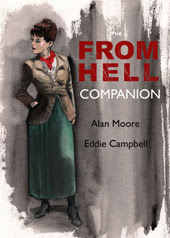


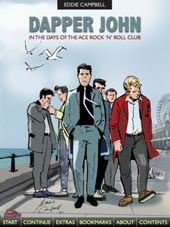
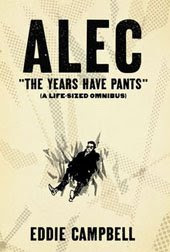
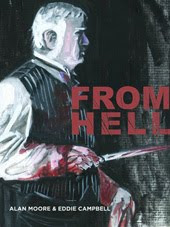
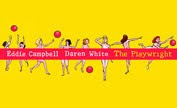
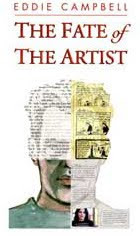
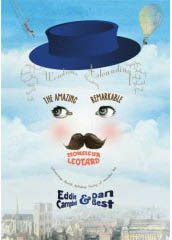





6 Comments:
Great appreciation of Robinson's work, Eddie. You know, you'd make a fine teacher of this sort of thing.
A great post, Eddie.
I had the chance to talk a little to Robinson in 97. I was 16, attending my first con, and a guy who was next to me at some booth starts talking that there's this guy Robinson who flew over from Brazil just to have a look at how cons are in Buenos Aires. He was pretty upset when he found out that he wasn't James Robinson, the writer. I just shook his hand and told him that I loved his work. He's a total gentleman.
(more on pictorial space tomorrow)
Excellent!
That was your finest post yet, Eddie. You've given me a great deal to think about.
Well, Campbell wouldn't "make" an excellent teacher...he "is" an excellent teacher.
Quite a good map of explanation of why Robinson was a brilliant artist, while the businessman for whom he labored was a piss ant.
You're a crank, eh? I find that hard to believe on the one hand, but understandable on the other. One of the craziest jackasses I ever knew in comics amazed me one day as he paused during a comic convention to teach a young kid how to illustrate fabrics in pen&ink illustrations. Here was this guy who was definitely a certifiable bastard (on virtually every level), showing himself to be quite adept and patient in the act of teaching what had seemed to me a rather complicated process.
Very interesting and informative, thanks for that, Eddie. It makes me feel there's a whole world of things I completely take for granted in the world of comics. It's nice to have my appreciation and understanding increased.
I look forward to hearing more about pictorial space tomorrow!
Post a Comment
Subscribe to Post Comments [Atom]
<< Home